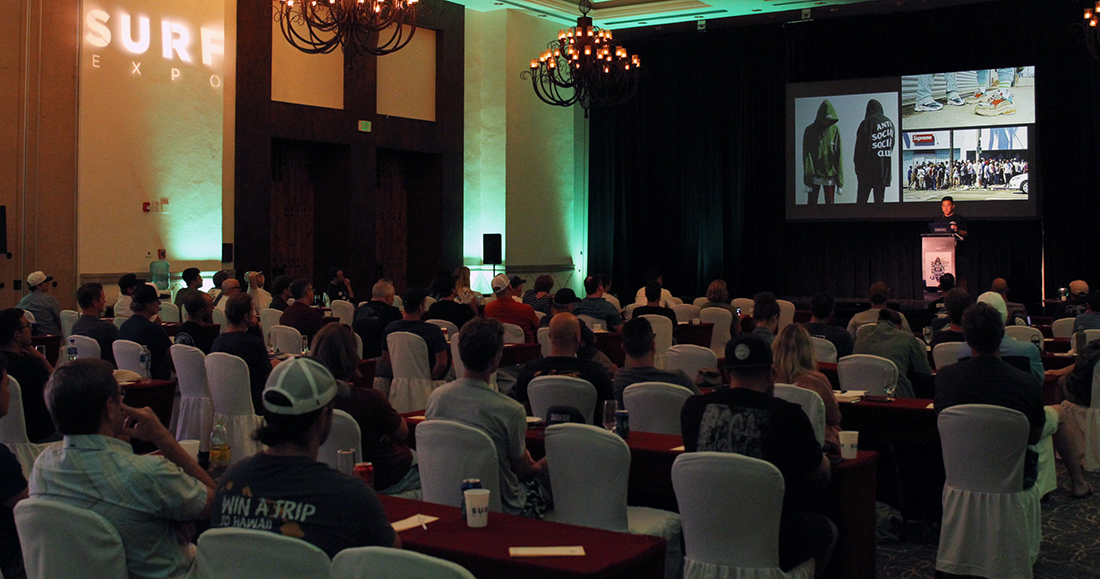
Earlier this week, I spoke at the annual SIMA (Surf Industry Manufacturers Association) Summit in Cabo San Lucas, Mexico.
I stood in front of 70 industry leaders, including the heads of Billabong, Quiksilver, and Rip Curl, and challenged them to fill a glaring omission that rarely—if ever—gets highlighted. My topic was the lack of racial diversity in the surf industry and why a brand’s (and market’s) success in 2018 banks on inclusion.
I am attaching an editorialized version of my speech below. Although I address surf companies in this piece, the research, statistics, and lessons are applicable to any industry. For example, streetwear also takes for granted how inclusivity has been a boon for sales. When the reseller market is powered by Chinese money, streetwear’s stars are Black designers, and Ben and I (the sons of immigrants) can thrive for 15 years with The Hundreds, you’d be remiss to leave diversity off the credits for streetwear’s success.
In doing my due diligence, even I was surprised by how fast our nation is changing and how Brown our customer is becoming. And with more than 250 million migrants blurring lines worldwide, this is not just an American trend, but also a global one. If you are a brand owner anywhere on the planet, I believe the following information is crucial in understanding your customer and surviving the next decades of business.
***
In full disclosure, I don’t know much about the surf industry, so in that sense, I am an unusual choice for a speaker at a surf summit. I’m not an expert on the mechanics of the surf marketplace. My only awareness of what happens in surf is by being literally in the surf, paddling out in the cold green water in the early mornings.
In that sense, I may be the right speaker for a surf summit. Because, I am the consumer. I am, almost embarrassingly, one of those people whose lives revolve around surf. Who plans his family’s vacations around surfing, much to their dismay. Yet, I’m also the guy who shies away from that ID: “Surfer.” Surf is the axis by which my world revolves, yet I don’t feel a connection with any of the brands or markers that designate surf culture. This makes no sense to me. Especially as someone who designs apparel, whose life’s work is dedicated to tying communities to brands.
And I’m not alone. Most everyone I surf with wouldn’t dress in a “surf” label outside of what they wear in the water. Surfers have nearly doubled in the last 15 years[1], yet the marketplace for surf product has dwindled and the industry is under duress[2]. Even many of the sponsored athletes would prefer to wear something trendier than, or less identifiable as, the traditional surf brand that pays their bills.
There are many reasons for this and it would take ten essays to comb through them all.
– The brands have gotten too big and soulless.
– Fast fashion has undercut sales.
– The kids are distracted by music festivals and video games.
I had breakfast with Bob McKnight, founder of Quiksilver, a few years ago, and he told me to exit the industry because the kids didn’t care about clothing anymore. “They just want to buy apps.”
But Bob, with all due respect, was wrong. Since our breakfast together, my sector of men’s fashion—STREETWEAR—exploded. There’s Supreme, of course. The New York skate brand’s valuation topped a billion dollars, thanks to global line-ups for limited items and high-profile celebrity endorsements. Kanye’s adidas Yeezies are this generation’s Air Jordan. Off-White’s Virgil Abloh and his sneaker collaborations arguably put Nike back on the map. It’s not unusual for me to look down at one of our customer’s receipts and see that he’s spent hundreds of dollars on T-shirts and pants. Kids aren’t spending hundreds of dollars in an afternoon on apps, but they are tossing that kind of money on streetwear brands like Anti Social Social Club, Pleasures, and Vetements.
I can also give 10 speeches to outline why and how streetwear has gotten so popular.
– It’s the limited edition thing.
– It’s the collaborations and the high fashion crossover.
– It’s the meticulous attention to brand integrity.
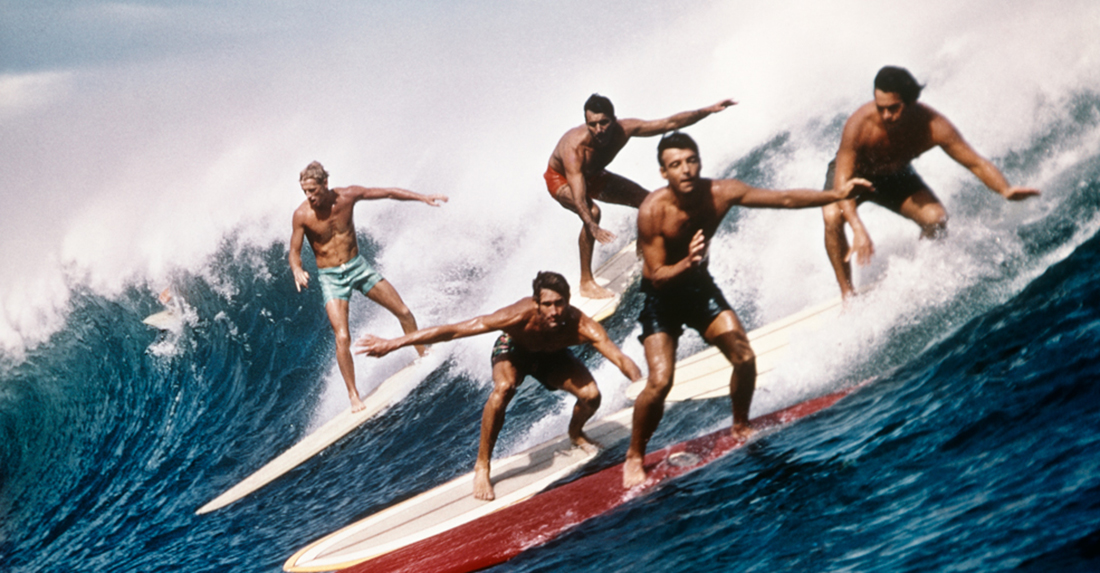
Yet, today, I’m going to zero in on just one theory as to streetwear’s resounding success in 2018. And, this hypothesis also intersects with an obvious void that I see and feel in surf.
It’s the presence and power of racial diversity[3].
“The quintessential image of the surfing body has, since the 1950s, been ‘phenotypically White’, specifically, a young, white, male subject, slim, toned, tanned—but not ‘too’ dark skinned—with a mop of sun-bleached blonde hair. This image has been perpetuated both in the surfing niche media and most significantly through wider mass media surfing discourses.”[4]
But, to first reach me, as with any customer, you need to understand where I come from.
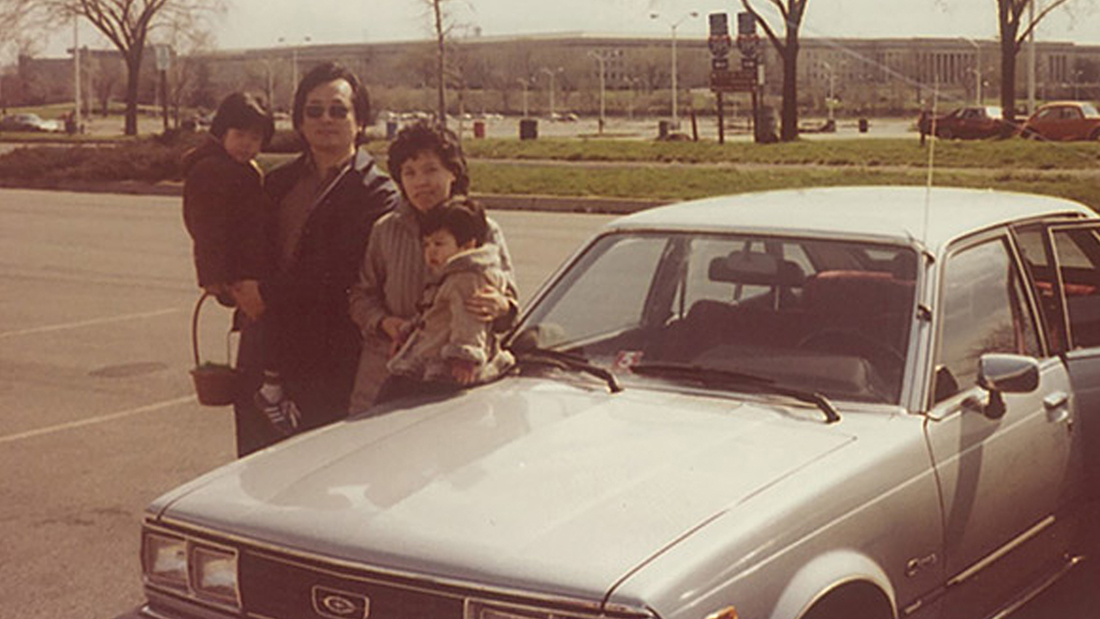
My parents immigrated from South Korea in the ‘70s, as did an influx of other Asians. Why? Well, up until that point, American immigration was limited to northern Europeans, and Brown people (who looked like me) were barred entry into this country
(“The law was just unbelievable in its clarity of racism,” says Stephen Klineberg, a sociologist at Rice University. “It declared that Northern Europeans are a superior subspecies of the white race. The Nordics were superior to the Alpines, who in turn were superior to the Mediterraneans, and all of them were superior to the Jews and the Asians...“[5]).
So, in 1965, Congress passed, and President Lyndon Johnson signed, the Immigration and Nationality Act. The bill opened our nation’s doors to immigrants from Latin America, Asia, Africa, and the Middle East, forever changing the face of our nation[6].
Before the new immigration law passed, 68% of legal immigrants came from Europe and Canada. However, in the following decades, almost half of immigrants would come from Hispanic and Latin American countries, with Asia at 35%. Not only did the act change the ethnic makeup of immigration, but it multiplied the number of immigrants overall.[7]
Look at it like this. When I was born in 1980, almost 85% of Americans identified as White[8]. But, by 2042 (so in the next 24 years), non-Hispanic Whites will drop to less than half of the American population. Not just because of immigration of other ethnic groups, but because of intermarriage, and the fact that non-Hispanic Whites have the lowest fertility rates of any major racial group in the States[9].
“[There’s] an obvious void that I see and feel in surf. It’s the presence and power of racial diversity.”
This population shift is growing larger every single year. Actually, every single minute. “Each day, the size of the US population increases by more than 8,000 people, and nearly 90% of that growth consists of people of color.”[10] According to a 2015 US News report, census data shows there are more minority children under age 5 in this country than Whites[11].
Plus, we are not just becoming a more diverse mix of people, the people themselves are becoming more mixed. In the last census, 6.8 Million people identified as multiracial.
To quote author Steve Phillips’s book on this demographic revolution, Brown Is the New White, we’re looking at The New American Majority.
I was born in Baltimore, but I grew up in Riverside, California in the 1980s. Outside of my family, there wasn’t anyone in my neighborhood who looked like me, who spoke broken English like my parents, whose mom packed strange and smelly fermented foods for lunch.
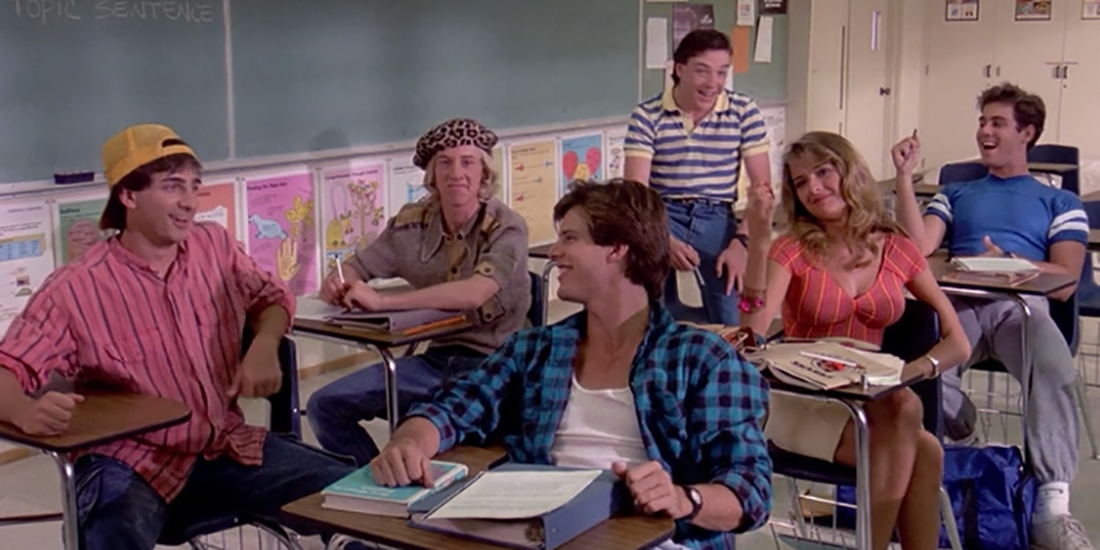
My heroes, as a youth, were White men. Tony Hawk and Kelly Slater. River Phoenix and Michael J. Fox. All the cool kids in my neighborhood resembled the characters in North Shore and Gleaming the Cube, with sun-bleached flop hairstyles and hot pink Oakley Razorblades. I grew up in the punk and hardcore scene, idolizing East Coast Youth Crew bands. My favorite clothing brands were designed by White men like Stussy, Mossimo, and Jive. And that wasn’t strange to me, because everything was led by White men. Because, again, at that time, almost everyone in America was White.
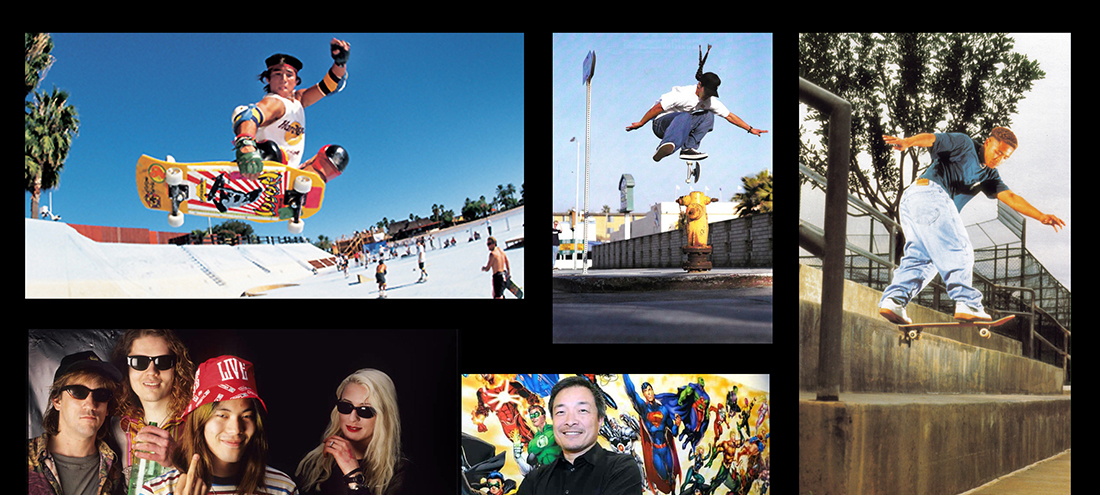
Yet, I still searched for myself in those magazines, videos, and album covers. I glommed onto Asian-American skateboarders like Daewon Song, Christian Hosoi, and Kien Lieu. Smashing Pumpkins sucked, but I convinced myself to like them because they had a Japanese-American guy in the band. I idolized Jim Lee, a Korean-American comic book artist who penciled X-Men and became famous in the Asian community for buying his parents a fancy car with his artistic success.
In this country, being a racial minority plays a significant role in your life. It might not be everything, but it is definitely something. Not just in terms of how you’re perceived, but how you see the world through your cultural lens. And so, naturally, we respond more warmly to those who take that perspective into consideration.
“What’s the advantage of a wider variety of gender, ethnicity and sexual presence represented in media and advertising? Simply put, we are more likely to identify with someone that looks like us.”[12]
Young people, today, are especially attuned to this logic. The America they’re growing up in looks, feels, and sounds different than the country I remember in the ‘80s and ‘90s. If best branding hinges on AUTHENTICITY, then the world your customer experiences in your brand should resemble the world that exists around them: the same world where they grew up with a Black President and where over half of their classmates have Spanish and Asian last names.

In 2000, California became the first state outside of Hawaii to have a non-White majority. Almost twenty years later, Hollywood is finally waking up to this reality and reaping the benefits. The Fast and the Furious movies are one of the most successful franchises in history, generating $4 billion in revenue, thanks to the diversity in front of and behind the camera.[13] Black Panther, featuring a predominantly Black cast and director, is shaping up to be the biggest box office release of 2018, approaching $1 billion in ticket sales worldwide[14].
To my point—that opening up to and serving minority demos will boost your business—there is a rebuttal. And that’s that Whites command buying power. Due to factors that are beyond the scope of this discussion, “the average White family has 12 times more wealth than the average Black family, 10 times more than the average Latino family, and 23 times more than a Native American family.”[15]
But, White people are overwhelmingly drawing to non-White culture as well. Consider rap and streetwear.

Music choice used to define our social identities. Thirty years ago, you were a “metal” guy or a “ska” girl and dressed accordingly. The next generation was all about, “I listen to everything” (which essentially meant “Everything but country!”). But, today? Most kids say that they just listen to rap.
By the end of 2017, for the first time ever, hip-hop surpassed rock to become the biggest music genre in the U.S. in terms of total consumption. Eight of the 10 most listened-to artists of the year came from the R&B/hip-hop genre.[16] Hip-hop has gone from being niche Black subculture to Top 40s Pop music.
Here’s why you should care. According to Transworld Business’ 2017 “State of Surf” report, “Music is at the vortex of trends and lifestyle influences when it comes to youth culture markets and clearly among the subset interested in surf culture.”
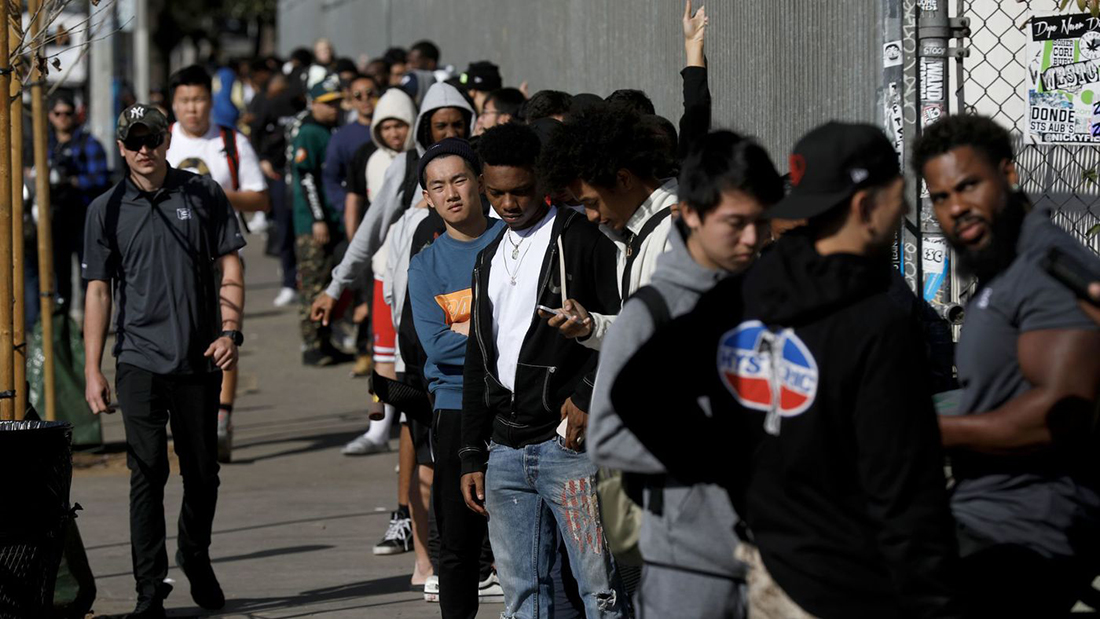
Streetwear, rap’s uniform, has benefited from the music’s dominance in popular culture[17], taking shelf space in stores that were once dedicated to surf labels. And like rap, streetwear’s potency is also largely attributed to its racial inclusivity. This, even though most pioneering founders, like their counterparts in the surf industry, are White men. The difference is that over the last several decades, these White men have embraced racial diversity in their marketing campaigns.
“Neither Palace or Supreme have a black designer at the helm—James Jebbia at Supreme is a white Brit in New York, while Palace’s Lev Tanju is the son of a Turkish footballer and British restaurateur mother. But their association with the outsider element of skate culture and notably diverse imagery—everyone from Lee “Scratch” Perry to Kate Moss, Tyler the Creator and Kermit the Frog have starred in Supreme campaigns—means they feel inclusive.”[18]
(I think one of James Jebbia’s smartest branding maneuvers, whether intentional or not, is implementing a racially diverse cast of ambassadors like A-ron, Jav, and Sage Elsesser to keep the brand relatable and relevant with the younger consumer and the New American Majority).
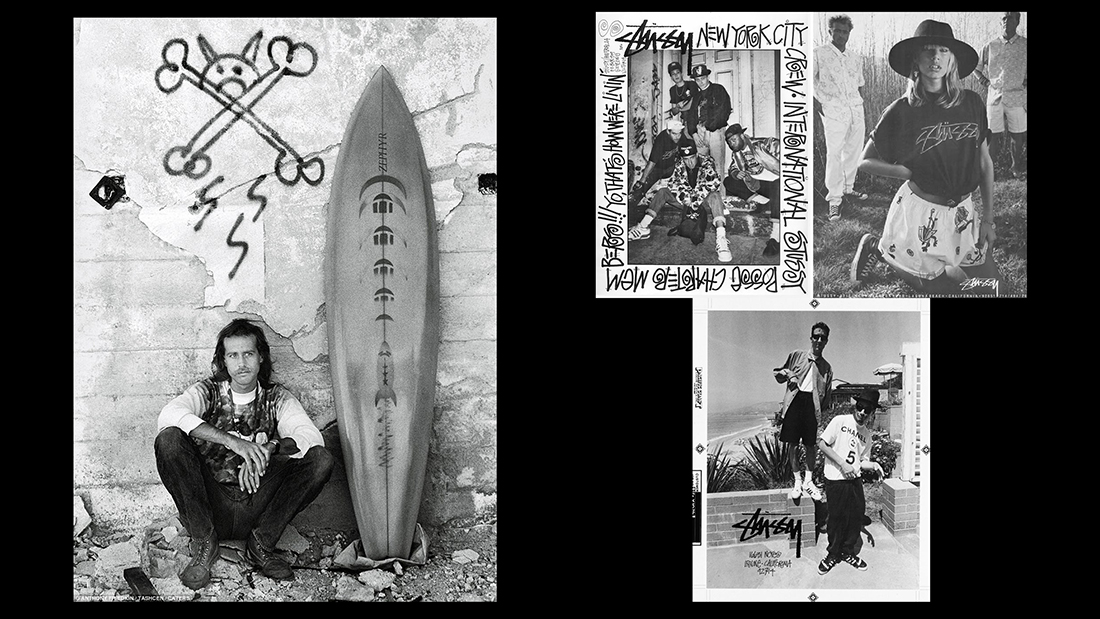
It’s impossible to say who started streetwear, but I like to point to two figures, who ironically come from the surf world: Craig Stecyk and Shawn Stüssy. Stecyk documented the collision of Dogtown beach lifestyle with Latino and Black gang culture in the 1970s. Shawn Stussy was an Orange County surfboard shaper who incorporated New York’s hip-hop aesthetic with his beach T-shirt label in the 1980s. This fusion of cultures paved the way for greater streetwear. For Stüssy, diversity elevated the brand beyond strictly surf, preserving its relevance today as a heritage streetwear brand.
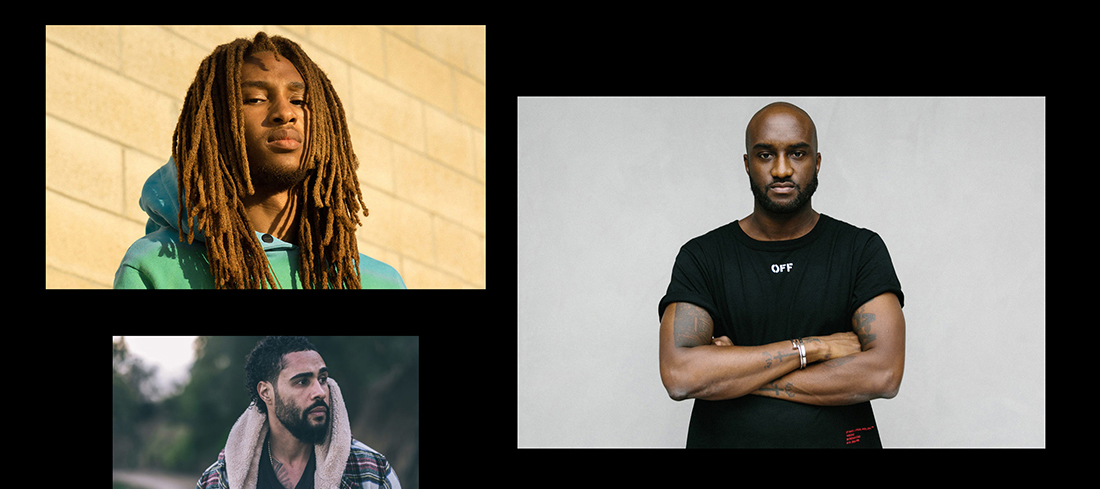
Today, streetwear fans demand even more authenticity from the brands they wear on their backs. Some of the most popular labels are not just fronted by young Black men (see the Y2K-era of urban department store labels), but owned and operated by them as well. Like Tyler, the Creator with Golf Wang. Zac from FTP. And Anwar of CARROTS. On the mainstream runway, you have Jerry Lorenzo designing Fear of God and of course, Virgil Abloh, the first Black menswear director at Louis Vuitton.
We’ve established the issue. As America gets increasingly (and rapidly) diverse, consumers are supporting brands that are sensitive to their backgrounds and speak their language (pun intended). Multinational corporations (like Starbucks) that open 500 stores in China already practice cultural competence to penetrate international markets and appeal to localized tastes.[19] But, cultural competence shouldn’t stay relegated to overseas customers. America itself is international, nuanced, and responsive to brands that appreciate our diversity.
“Just as one wouldn’t go into China without cultural consultants and guides, (we) shouldn’t go into Asian American, Latino, Native American, Arab American, or African American communities without culturally competent advisors.”[20]
Authenticity, man. You need to hire the very people who are sympathetic—yes—but more critically, empathetic to this changing customer. If you’re not naturally stocked with diverse leadership in your organization, you should make the conscious decision to hire it.
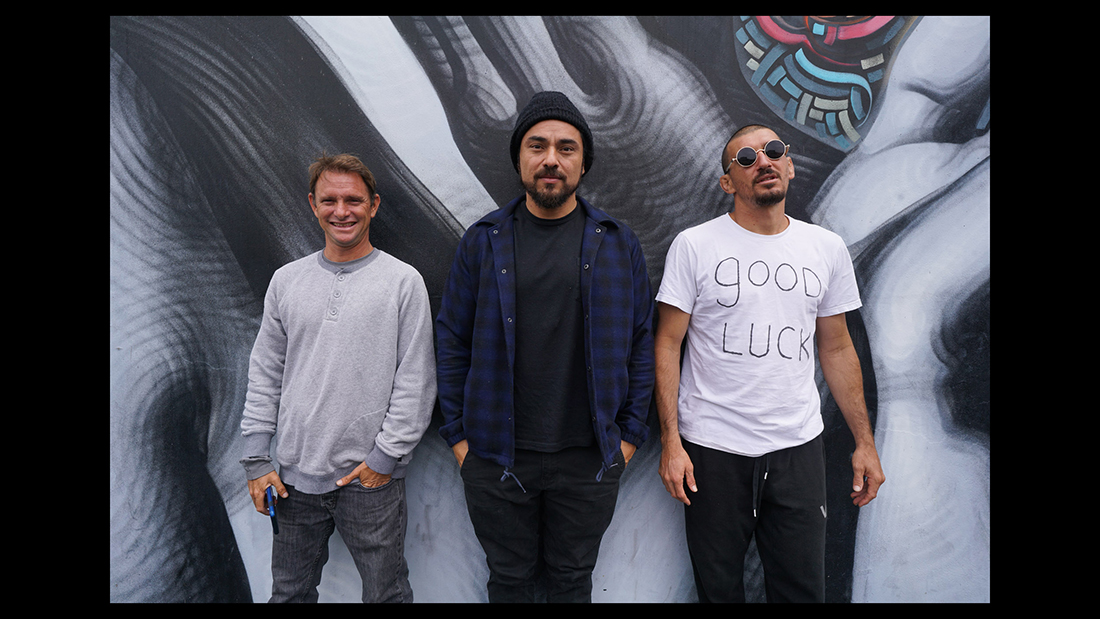
In doing my research for this talk, I spent time with some of my friends in the surf industry. One of those people is Pat Tenore of RVCA. As an outsider, RVCA has always felt different to me than other labels in his category, and not just because he incorporates street art, MMA, and skateboarding into his brand language. Pat also happens to be of mixed descent, which is what caught my attention early on. Pat’s mother is Chinese, Filipino, and Spanish. His dad is Italian and Polish. He grew up in Oakland and was exposed to graffiti, hanging out early on with the MSK crew. So, already, we are getting a more diverse portrait of a typical “surf” founder. His brand also reflects these subtleties in background and cultural texture. Of all major surf brands, his is the only one that can hold its own in both the legitimate street and skate categories, and in my opinion, that complexity has blessed RVCA with longevity in a turbulent surf market.

I also visited my friend Ryan Hurley, who helped me understand why surf is so White to begin with. At the core, there are matters of geography and access that divide deeply down racial lines[21]. Much of this has to do with socioeconomics, but they also have to do with historical racism and discrimination[22]. The act of surfing is more accessible to those who can afford to live near the coastlines in warmer climates (and in the past, were of White skin color[23]). Then, they need the time and luxury to surf. So, automatically, we’re speaking to a specific class of people.[24][25]
And these people, who often tend to be White, have a greater opportunity to be the best in the sport. They get sponsored and achieve front-and-center placement in advertising. This makes sense when, as a company, you’re dumping your entire marketing budgets into your athletes. Why feature anyone else?[26]
At the end of the day, you get a consistent majority of White men and women representing the sum of surf culture.

Makayla London is a 22-year-old mixed Black woman who is in her final year at Cal State Fullerton. She’s a model and a social media personality, with 320,000 Instagram followers. Makayla also happens to be Hurley’s newest intern as well as one of the surf company’s lifestyle models.
When I ask Makayla what it’s like for her (an outsider, a woman, a person of color) to not only work in the surf industry, but also be a face of it, she underlines how the lack of representation misstates surf’s inherently welcoming nature.
“That is what surf culture is like: ‘Hey we’re here to have fun!’ Everyone, when you go to the beach, whether you’re Black, White, Mexican, anything, you’re invited. But people who live in the middle of the country, when they see campaigns and they don’t see themselves, then they automatically assume that they’re not invited.”
This lack of racial diversity in advertising trickles down to an unpleasant sentiment that people of color are not welcome into the fold. “For Black kids, it’s almost like surf is not an option, you know? Like, ‘What? You surf? What?’”
So, the surf industry first needs more racially and ethnically diverse people behind the scenes. But, secondarily, we need more Brown faces to shine back at the increasing number of Brown customers flipping through the Instagrams.

Like surfing, skateboarding also started out as a predominantly White culture and pastime, but a couple moves brought it up to date in the new millennium. First, sure, was the access. Most Americans can’t get to a beach, but anyone can put together a board and roll down the street. Second, skateboarding’s embrace of hip-hop culture made it relatable to a diverse demographic. Long before Black skaters became commonplace, White pro skaters like Chad Muska adopted hip-hop culture into skate lifestyle. But, it wasn’t until skateboarding had prominent Black ambassadors like Stevie Williams and Pharrell that the subculture entered the mainstream.
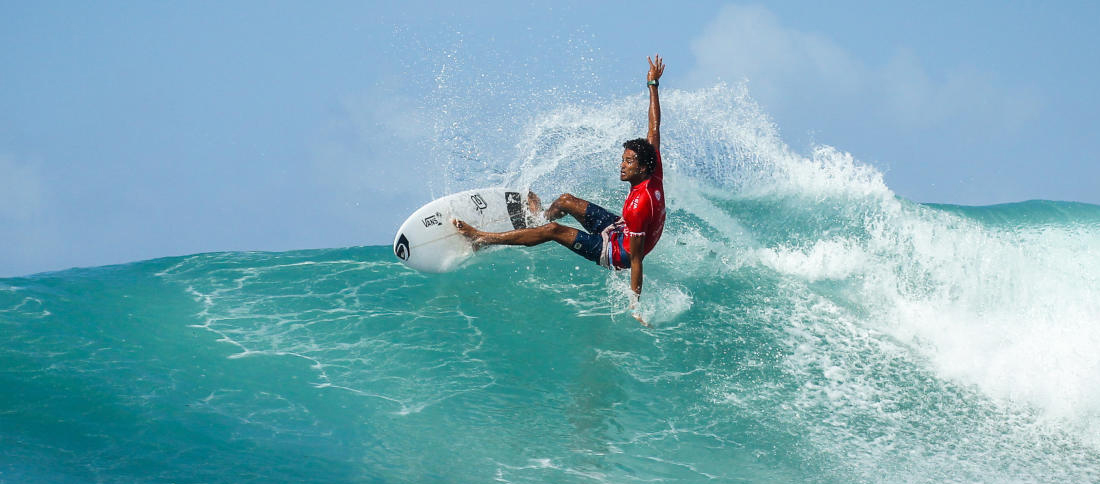
Who is the Pharrell of surfing? There have always been Black faces in surfing, from Buttons to Nick Gabaldon and Mikey February, just like skate had Ray Barbee and Sal Barbier. But, who does surf have today that can do what Tyler, the Creator and Lil Wayne have done to break outside of the core and popularize modern skateboarding to a progressive mainstream audience?
This begs the question. What if athletes weren’t the only representatives for surf culture? Look, I don’t foresee an immediate future where Black and Brown surfers dominate surf contests (that will happen once wave machines sprout up around the country), but I can anticipate a surf market powered by lifestyle influencers of color. Like adidas’s strategy with Kanye, my final suggestion for the surf industry is to think beyond just sponsoring athletes in connecting your brand with consumers.
Surfing, to me, wasn’t just cool because of a marquis pro, an air or a big wave. Surfing was cool because of the attitude.
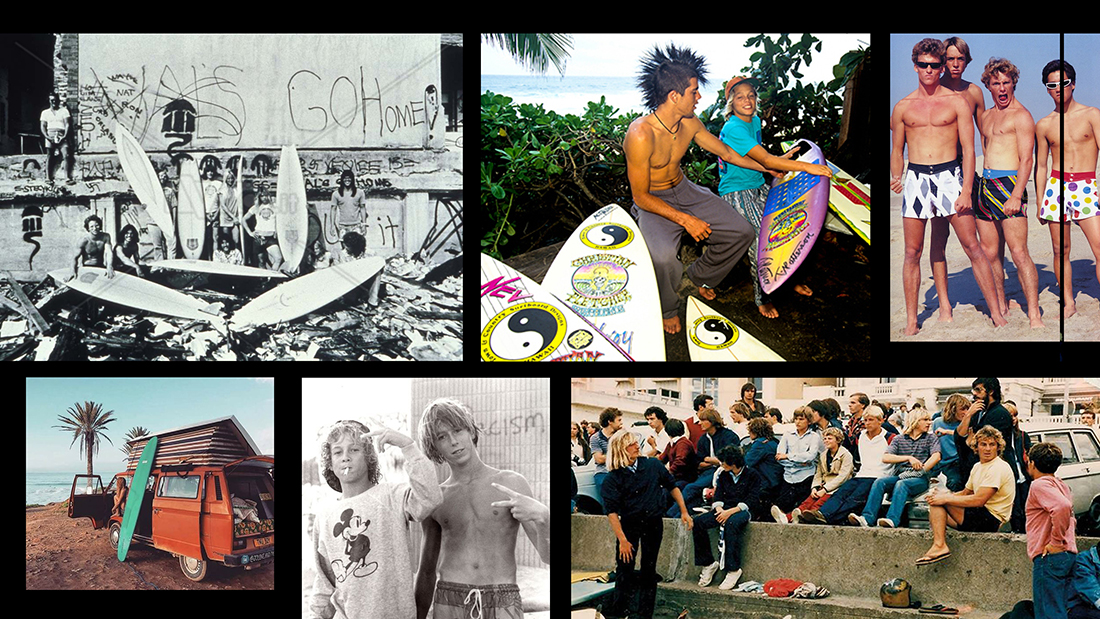
Surf was the original counter-culture. In the 1960s, as it gained traction in Southern California, surfing signified a hopeless future, pissed off authority, and resisted social conventions. These qualities fostered generations of youth rebellion. Don’t forget! Surfing is where everything cool began—from skateboarding to streetwear. Everyone (especially angry, displaced teenagers) can relate with, and aspire to, surfing’s philosophies that transcend race, class, and borders.
According to Ryan Hurley, his brand isn’t just about surf. It’s about freedom and empowering youth.
“I love this idea of: you don’t have to be a surfer to surf. Like, you don’t have to be like, ‘I’m a surf guy.’ You can be an artist, you can be a skateboarder, you can be whatever, and riding waves is just something you do.”
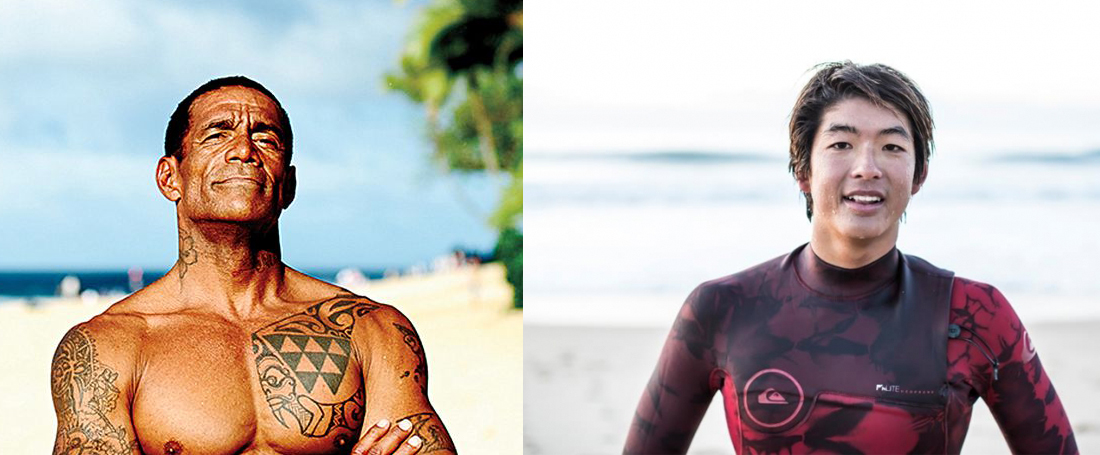
In the last few weeks, I’ve talked to a lot of surfers both in the industry and out. Almost all of them were White and the majority was freaked out by the topic of racial diversity in surf, feeling unqualified to speak on the matter. I get it. When you’re a White dude on the other end of a tape recorder, race is an uncomfortable issue and speckled with landmines.
I also heard this defense a lot:
– “Bobby, race isn’t something we think about or force into the conversation.”
– “We do what comes naturally for our brand.”
– “Diversity is not something we intentionally put out there.”
I appreciate the gesture, but I’m here to suggest that diversity should be in the conversation, especially in this sociopolitical climate. I think the majority of White Americans are so repulsed by racism, and so fearful of being labeled a “racist,” that they’ve overshot the mark and ignored race completely (“I don’t see color!”). But, race is a very important part of identity and to overlook it means dismissing a culture completely. To treat race as invisible is to treat people as invisible.
I know, for many of you, hiring from outside your community, featuring people of color, and contributing to other cultures may feel inauthentic. But, for young people today, nothing feels faker and off-key than perpetuating a monochromatic world that doesn’t sync up to the beautifully colorful nation they live in. For any brand today, surfing or not, inclusion and diversity must be a conscious, proactive—and yes, maybe even forced—decision. Not just because it’s the human thing to do, the moral thing, the American thing. And not just because you can’t plead ignorance when your lack of diversity gets you into hot water (think H&M’s hoodie fiasco and Nike’s executive exodus).
But, because that’s what the consumer wants.[27]
That’s where our future leads.
***
(Disclaimer: This essay is confined to diversity as it pertains to race. However, this issue is part of a much larger conversation that involves and intertwines gender, sexual orientation, and other underrepresented minority groups in America.)
[1] http://www.newsweek.com/surfer-increase-waves-crowded-congested-trestles-477005
[3] “Surfing’s the last one; I mean, look at it—you got hockey, they’ve got their blacks now, skateboarding has got their blacks now, snowboarding has had theirs...Everybody else has had blacks. This is the one sport that has been consistently white-dominated for decades.” Wheaton, Belinda. The Cultural Politics of Lifestyle Sports (Routledge Critical Studies in Sport) (p. 134). Taylor and Francis. Kindle Edition.
[4] Wheaton, Belinda. The Cultural Politics of Lifestyle Sports (Routledge Critical Studies in Sport) (p. 121). Taylor and Francis. Kindle Edition.
[5] https://www.npr.org/templates/story/story.php?storyId=5391395
[6] https://www.npr.org/templates/story/story.php?storyId=5391395
[7] Lind, Michael (1995). The Next American Nation: The New Nationalism and the Fourth American Revolution. New York: The Free Press. p. 133. ISBN 978-0-684-82503-8.
[8] https://en.wikipedia.org/wiki/White_Americans
[9] https://medium.com/2016-index-of-culture-and-opportunity
[10] Philips, Steve. Brown is the New White: How the Demographic Revolution Has Created a New American Majority. The New Press, 2016.
[12] https://www.forbes.com/sites/davidvinjamuri/2015/12/11/diversityinadsisgoodmarketing/#7930691b4248
[14] Don’t forget other recent successful Black films like Get Out and Straight Outta Compton.
[15] Philips, Steve. Brown is the New White: How the Demographic Revolution Has Created a New American Majority. The New Press, 2016.
[17] https://quartzy.qz.com/1160897/why-isnt-streetwear-just-called-fashion/
[19] Philips, Steve. Brown is the New White: How the Demographic Revolution Has Created a New American Majority. The New Press, 2016.
[20] Philips, Steve. Brown is the New White: How the Demographic Revolution Has Created a New American Majority. The New Press, 2016.
[21] According to recent research (USC Coastal democratic study), people living along the Los Angeles coastline are ‘disproportionately non-Hispanic white and wealthy, compared to the state and county: 68 per cent are non-Hispanic white, 16 per cent are Latino, nearly 8 per cent are Asian and less than 5 per cent are black. In all coastal communities, the black population was ‘too small to be significant’ Wheaton, Belinda. The Cultural Politics of Lifestyle Sports (Routledge Critical Studies in Sport) (p. 130). Taylor and Francis. Kindle Edition.
[22] “There used to be. [...] before integration, under segregation there were areas, there were black beaches. There were actually black communities with only beaches in those areas. But with integration, and the rise of the United States as a capitalist development, the real estate values took off sky high. [...] Because beach real estate is very, very expensive and highly desirable... and because there tends to be very, very conservative elements living along the beach, black folks were discouraged from coming to the beach and using the beach.” Wheaton, Belinda. The Cultural Politics of Lifestyle Sports (Routledge Critical Studies in Sport) (p. 130). Taylor and Francis. Kindle Edition.
[24] https://www.theguardian.com/us-news/2016/sep/19/ucla-study-racism-segregation-orange-county
[25]“When segregation was legally imposed in the 1920s, the city beaches around Los Angeles, as elsewhere, were typically limited to whites only. In Santa Monica, one small area at the foot of Pico Boulevard marked ‘Negroes only’ became known as the Inkwell. The racial restrictions at public spaces in California were legally invalidated in 1927, yet ‘de facto segregation’ continued through to the 1960s (Jefferson, 2009: 155). That is, white citizens adopted a range of tactics, from discrimination to harassment, to ‘discourage’ African Americans from visiting or using public and private facilities, or settling in particular beach locales (ibid.: 180). For example, African Americans were barred from the beach clubs emerging on the Santa Monica coastal strip, such as the Casa Del Mar Hotel, which opened in 1926 and which had a private, fenced-in beach to keep the ‘undesirables’ out (Williams, 2007). The laws and practices around real estate ownership also became effective ways to exclude people of colour.” Wheaton, Belinda. The Cultural Politics of Lifestyle Sports (Routledge Critical Studies in Sport) (p. 127). Taylor and Francis. Kindle Edition.
[26] Ryan breaks it down: “You end up with these brands that have these athletes that have had access to the ocean and those are who you’re portraying because they’re at the elite level...(Surf companies’) sports marketing or their brand marketing dollars go into their surf athletes. They go into their athlete contracts and then they feel obligated to advertise these athletes. That’s kind of the culture, the victim of the sport, where ironically you have a completely global sport, takes place in so many countries but it’s very much focused on a White male you know, which I don’t think anyone’s trying to do, but it’s where their investment is... They’re not going to put other people in their marketing collateral that aren’t their athletes because they’re paying all this money for these athletes.”

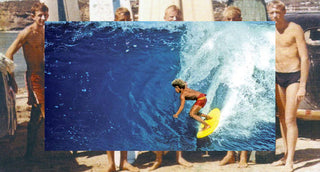
웹툰사이트 추천
When the going gets tough, the tough get going. 웹툰사이트 추천
웹툰미리보기
His imagination ran wild as he contemplated the shell’s extraordinary significance. The mere idea of discovering something remarkable on their humble farm filled him with awe. 웹툰미리보기
jake
The increasing prevalence of online theft targeting digital assets is disheartening, causing potential investors to hesitate in taking advantage of this lucrative investment opportunity. Personally, I experienced a loss of $474,000 when I fell victim to an online Pocket Options Broker. They enticed me with promises of high returns on my investment, but when I tried to access the investment website later on, I was denied entry. Despite my attempts to contact their support team, I soon realized that I had been scammed.
Desperate to recover my funds, I turned to the internet for solutions and came across Agent Wilford from Recovery Hub. His excellent reputation for providing exceptional recovery services caught my attention. Taking a leap of faith, I decided to reach out to him, and to my amazement, within 24 hours, he successfully helped me retrieve all my lost funds. I cannot express enough how grateful I am for his outstanding service.
If you find yourself in a similar situation, I strongly recommend seeking assistance from Wilford at (contact@cyberjusticerecoveryhub.com) for unmatched recovery support.